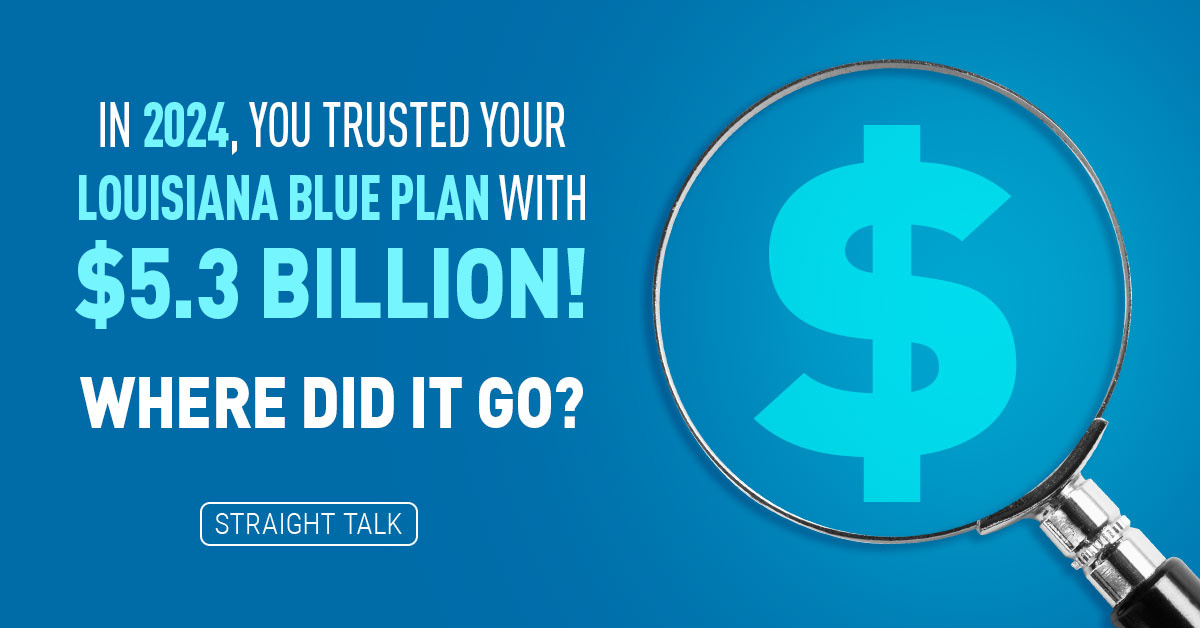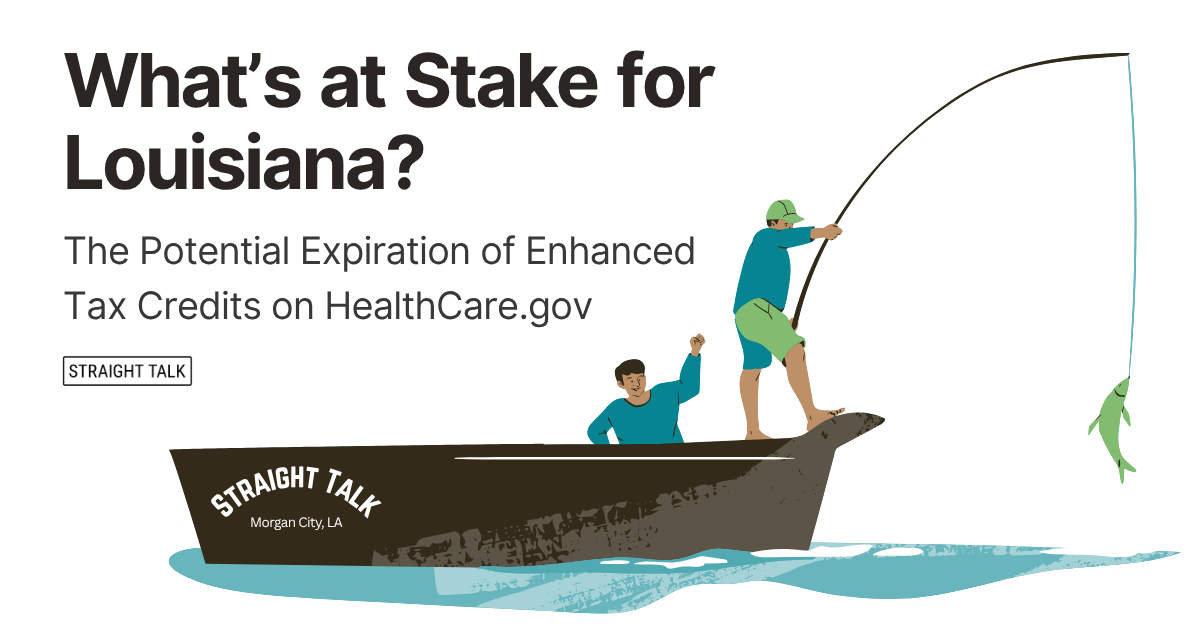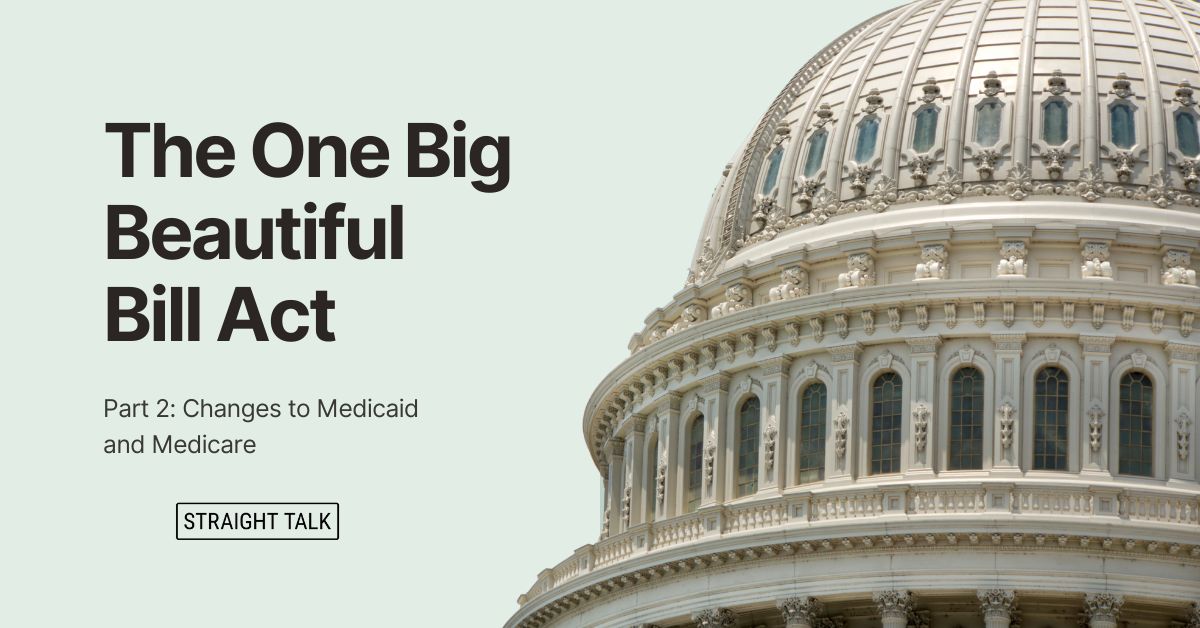Health insurance companies like Blue Cross and Blue Shield of Louisiana have a long history of trying to slow down the rapidly rising cost of healthcare. Over the years, a variety of strategies have emerged. Frankly, we’ve tried lots of stuff. When a company comes to us because their employee healthcare costs are going up too quickly, we try things like cutting out high-cost medical providers, steering people to less-expensive (but equally effective) drugs, raising out-of-pocket costs to discourage non-essential healthcare, and changing the mix between the employer contribution and the employee contribution.
Want to know what all these tactics have in common? None of them make the patient healthier. Our dream, the Holy Grail of Health Insurance, has always been to find out how to make patients healthier BEFORE they need expensive treatments so that costs go down. After decades of trying, I think we’ve found it.
It’s called the Quality Blue program. It’s a fascinating story.
You see, according to the National Institutes of Health (NIH), about 70% of your current health status has nothing to do with your genetic make-up; it is entirely self-inflicted. Also, the NIH tells us most of the diseases that lead to very expensive healthcare are PROGRESSIVE — that is, they don’t just happen all of a sudden; there is typically a long lead-up time before something bad happens. And these diseases can be well along in progression before the patient even feels anything bad.
So we asked, what if you could identify the progression, and cut it off BEFORE something bad happens? THAT’s Quality Blue in a nutshell. Here’s what it attacks:
Roughly 75% of all healthcare expenses can be tracked back to three chronic conditions that lead to at least one OTHER condition that is very bad. Here’s the quick list:
- High Blood Pressure (hypertension) can lead to damaged arteries, clots and paralysis. We call this a “stroke” or an “ischemic event.” Turns out, if I find out you have high blood pressure, I can usually put you on some very inexpensive medication that will prevent you from having a stroke for a long time. If I don’t, and you have that stroke, the new direct medical cost is $15,000 in 90 days. That doesn’t count the personal costs of a stroke. No thank you!
- High “Bad” Cholesterol (hyperlipidemia) can lead to damaged arteries, clogged arteries and heart muscle damage. We call that event a “heart attack” or a “cardiac event.” Most cholesterol medications are VERY cheap; the one I take is about $1 a day. If I don’t, and I have that heart attack, the new direct medical costs average $21,500 in the first 5 days! The cost alone could give you chest pains!
- High Blood Sugar (Diabetes Type 2) can be a very progressive disease in most folks that can take many years to develop. If your average blood sugar (A1C) starts creeping up, then you can take medication that will slow that creep down a lot, especially if you combine it with some dietary changes. Again, these meds are relatively inexpensive. If we fail to control A1C, and you have to start taking insulin shots, that costs an extra $7,000 a year on average in direct medical costs. Not counting all the other problems diabetes can trigger. Not so sweet!
- Chronic Kidney Disease (CKD) It turns out that if you have conditions #1, #2, or #3 over a period of time and you don’t treat them, they can damage your kidneys, which are critical to your ability to secrete waste products from your body. Someone with impaired kidneys or CKD might have to take $1,000-$1,500 in medications each month to bolster their kidney function. If those meds don’t work and your kidneys stop working, machines are used to clean your blood (dialysis), and that can easily run $150,000 a year. The only solution at that point is to wait for a kidney transplant, and that can take years and cost over $1 million. But eliminating No. 1 through No. 3 can eliminate lots of kidney failures.
So imagine if we caught these things early, put you on the inexpensive medications and pushed these bad events back for years (or prevented them from ever happening?). How much better would you feel? How much money would you save?
Our doctors here at Blue Cross (did you know we employ docs?) told us that if you could simply identify all the people who had these problems in our population of insured people, and get/keep them on their inexpensive medications, we could save a fortune and, more importantly, make them healthier with a higher quality of life by avoiding all the bad things in #1-#4. They also told us the best person in the life of these patients to help them stay healthy was their Primary Care Physician (PCP).
So, we designed Quality Blue to help PCPs get these folks well. We give the docs (I call them “Q” docs) all the data we have on these patients (from their claims) so they are better prepared when you come in for your next appointment. This cuts back on the part of the doctor visit where they ask you all the same questions over and over again! And, it gives the docs more time to focus on the actual problems, not on paperwork. We track the patient’s bloodwork results to make sure the numbers are getting better. And we pay the PCPs a few extra dollars based on how well they are doing to make SURE these folks get healthier, not sicker.
The better the numbers get, the healthier the patient gets, the more we pay the docs. We put your DOCTOR on commission, and his only function is to make you better, to move you further away from that next heart attack, stroke, diabetes or kidney failure. And guess what?
It’s working. The Q docs are doing a PHENOMENAL job. Not only is our tracked patient population getting measurably healthier, but we sent all our data to some really bright folks at the Tulane School of Public Health and asked them to tell us if the people going to the Q docs are costing the system more or less money as they get well compared to the people with the same conditions who are NOT going to the Q docs.
Tulane has spoken. Even after we pay the commissions, the average patient with conditions #1-#4 going to the Q docs is using $27 per month LESS healthcare than the people just as sick but going to different doctors. AND, after 18 months, the Q doc patients have 31% lower blood pressure, 25% lower blood sugar, 40% lower cholesterol and 69% fewer of them are degrading into kidney disease! The main reason these patients cost less is because the Q docs are keeping them out of the hospital and treating them in the office. I’ll take an office visit over a hospital stay any day!
Information sharing, plus commission payments, plus caring doctors is making patients healthier AND saving money!
The Holy Grail indeed! We are rolling this program out to more docs statewide, so keep watching. When you look up a PCP online, look for a blue “Q” next to their name. And you might even get a break on your co-pays!




